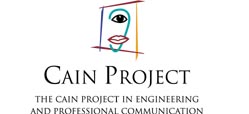| Graduate Student
Networking in Action
Jan
Hewitt
|
|
How
to Field Questions
- Repeat the question so that everyone can hear it (and
to verify what is being asked)
-
Answer to the entire group, not just to the questioner
-
Remain positive, even if the questioner is negative
-
Number slides so you can easily go to the one being asked
about
-
Have back-up slides to help answer possible content questions
-
Let no one dominate the question-answer time (Say “I’d
enjoy talking with you in greater detail after the session.”)
Seven Key Content Questions
- Problem/Focus/Claim?
- Importance?
- Method(s)?
- Context?
- Results?
- Unique contribution?
- Possible applications?
|
I also talked about the Cain Project with graduate students from
the two women’s organizations that sponsored the trip: Movement
of Underrepresented Sisters in Engineering and Science, and the Society
of Women Engineers. One of them was Saumya Sivaram VanderWyst, a
Rice BIOE graduate, now working toward a PhD at Michigan. Graduate
students at Michigan hope to convince their university to initiate
their own version of the Cain Project.
Jan Hewitt, PhD, works mainly with graduate students. She teaches
thesis-writing groups
each semester. |
|
 |
|
Graduate students at the University of Michigan recently invited
me to give two presentations to science and engineering graduate
students. The Michigan graduate students had heard about the
Cain Project’s good work from Jason Deibel, a Michigan
graduate who is now a post-doc working with Daniel Mittleman
from Rice’s Department of Electrical and Computer Engineering.
Desperate for help with developing speaking and writing skills,
several students contacted Debbie Taylor, Michigan’s Assistant
Director of Women in Engineering, College of Engineering; tracked
me down via the Cain Project website; secured funding; and invited
me for a two-day visit.
Some 35 graduate students attended the evening session on “Strategies
for Giving Persuasive Oral Presentations.” The next afternoon,
17 students participated in a two-hour workshop about “Writing
for Publication.”
In the first session, after a lively discussion about what the
students had noticed in good and in poor talks,
Table of Contents
Graduate Student Networking . . . . . .
From Alzheimer’s to Tsunamis. . . . . .
Rice Winners . . . . . . . . . . . . . . . . . .
Concept Mapping . . . . . . . . . . . . . .
Software Specs . . . . . . . . . . . . . . . .
VIGRE Online . . . . . . . . . . . . . . . . .
Fast Facts . . . . . . . . . . . . . . . . . . . . |
1
2
4
6
7
8
8 |
|
|
I suggested presentation
strategies in five areas: audience, content, delivery, visuals, and
fielding questions (see box in right-hand column). After the talk,
one young man said to me, “You have really helped me. I didn’t
have any idea about how to prepare a talk, and now I do. And I have
a role model to emulate.”
The interactive workshop about ways to write a publishable paper began
with a discussion about what makes a paper publishable—for example,
leading- edge research, adaptation for a specific readership and for
specific journal requirements, and answers to the Seven Key Questions.
We then focused on the seven key content questions, with the students
first analyzing a model abstract from a published paper to see how
all seven questions can be answered, even in an abstract of only 95
words. (See the Winter 2004 Cain Project Newsletter for a more detailed
discussion of the key questions and the model abstract. The newsletter
is available online on the Cain Project Website: http://www.owlnet.rice.edu/~cainproj).
After analyzing the model abstract, the students worked in pairs to
answer the seven questions about their own work.
The workshop ended with a guided analysis of portions of the published
paper, looking at foregrounding of main ideas, transitions, completeness
of explanation, incorporation of related references, use of relevant
visuals, and summary of results. The students were enthusiastically
grateful for such specific guidelines.
|

![]()
